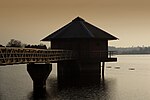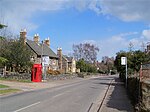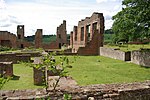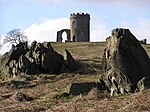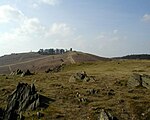Swithland Wood and The Brand

Swithland Wood and The Brand is a 87.9 hectares (217 acres) biological Site of Special Scientific Interest south of Woodhouse Eaves in Leicestershire. Swithland Wood is a Nature Conservation Review site, Grade II. The Brand is designated a Precambrian site in the Geological Conservation Review, but the dating has been changed due to the discovery of trace fossils from the succeeding Cambrian period. Swithland Wood is a public woodland in Charnwood Forest, in Leicestershire. Although close to the village of Swithland, it is almost entirely within the parish of Newtown Linford, just north of Bradgate Park and also near Woodhouse Eaves and Cropston. The wood is Leicestershire's most important ancient woodland for nature conservation. Quarries within the wood were a source of the distinctive Swithland Slate roofs found on many local buildings as well as the slate gravestones common in Leicestershire churchyards. Swithland Wood has been a public woodland since 1925, upon its acquisition by the Leicester Rotary Club, having previously been part of the estate of the manor of Groby. Since 1931 it has been managed by the Bradgate Park and Swithland Wood Trust.
Excerpt from the Wikipedia article Swithland Wood and The Brand (License: CC BY-SA 3.0, Authors, Images).Swithland Wood and The Brand
Roecliffe Road, Charnwood Newtown Linford
Geographical coordinates (GPS) Address Nearby Places Show on map
Geographical coordinates (GPS)
| Latitude | Longitude |
|---|---|
| N 52.706 ° | E -1.203 ° |
Address
Roecliffe Road
LE7 7GB Charnwood, Newtown Linford
England, United Kingdom
Open on Google Maps


